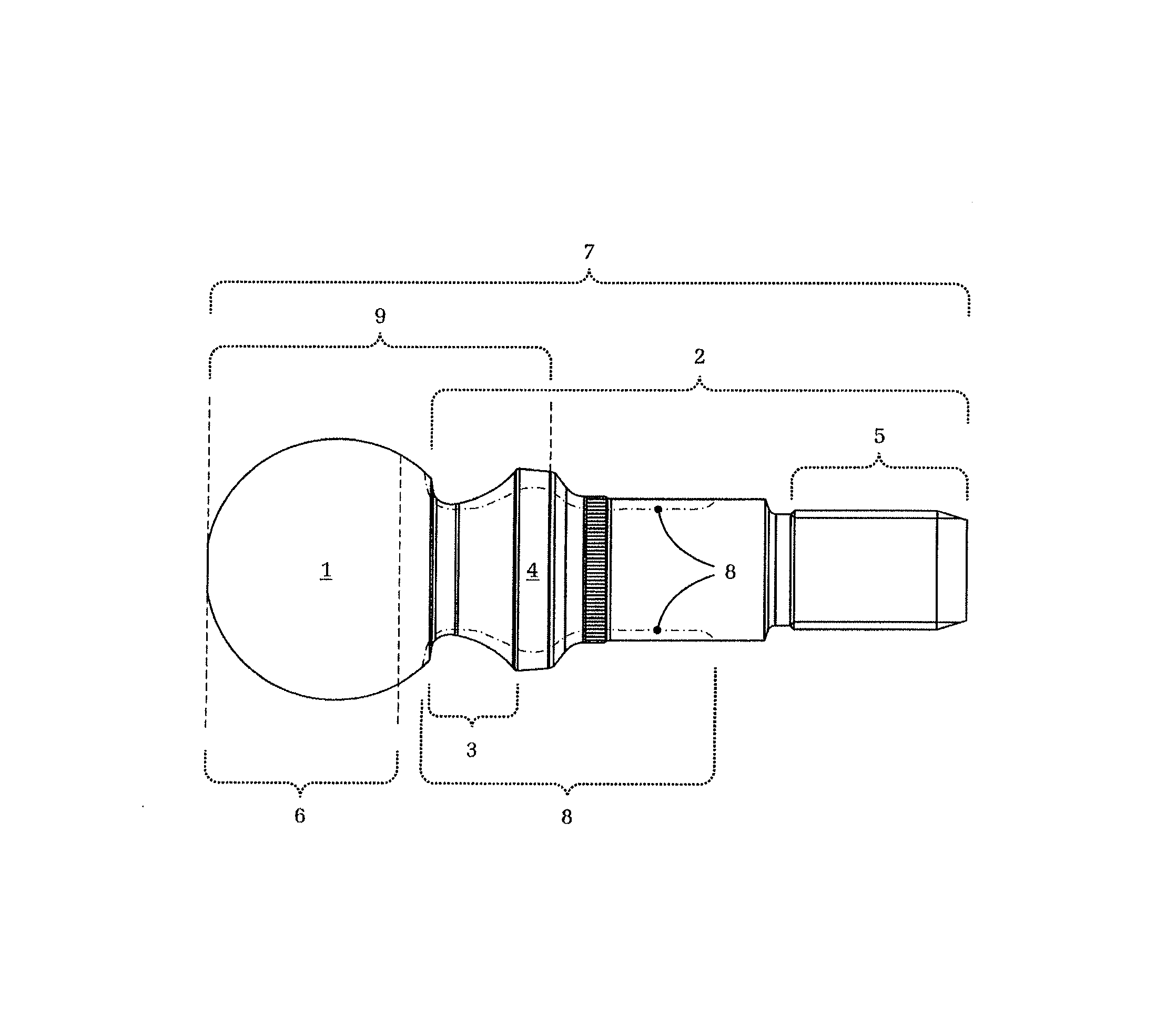Ball pin and ball joint
a technology of ball joints and ball pins, which is applied in the direction of couplings, mechanical equipment, rotary machine parts, etc., can solve the problems of premature wear or failure of the joint, corresponding disadvantageous consequences of joint wear, and the tribological system of the joint is particularly severe, so as to reduce corrosion protection, reduce wear and tear, and improve the effect of fatigue strength
- Summary
- Abstract
- Description
- Claims
- Application Information
AI Technical Summary
Benefits of technology
Problems solved by technology
Method used
Image
Examples
Embodiment Construction
[0025]The FIGURE shows the ball pin, which comprises a joint ball 1, a shaft area 2, a neck area 3, a seal area 4 (against which a sealing bellows rests) and a threaded area 5.
[0026]In this case the example embodiment of a ball pin has an oxide layer over its entire length or surface 7. On the one hand the oxide layer leads to an improvement of the corrosion protection, while on the other hand—in accordance with the applicant's new insight—in particular it improves the wear resistance in the bearing contact area 6 between the joint ball 1 and the ball socket (not shown) of the ball joint. Thus, the ball pin shown is particularly suitable for use under high static pre-loading and / or during periods of operation with micro-movements, in which solid-on-solid friction between the ball pin and the ball socket predominates.
[0027]In this case the ball pin shown is additionally provided with surface layer hardening in the area 8 (also indicated with dot-dash lines). This is the area in which...
PUM
 Login to View More
Login to View More Abstract
Description
Claims
Application Information
 Login to View More
Login to View More - R&D
- Intellectual Property
- Life Sciences
- Materials
- Tech Scout
- Unparalleled Data Quality
- Higher Quality Content
- 60% Fewer Hallucinations
Browse by: Latest US Patents, China's latest patents, Technical Efficacy Thesaurus, Application Domain, Technology Topic, Popular Technical Reports.
© 2025 PatSnap. All rights reserved.Legal|Privacy policy|Modern Slavery Act Transparency Statement|Sitemap|About US| Contact US: help@patsnap.com


